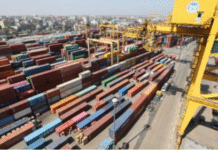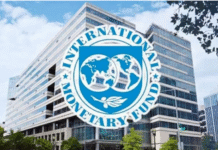Over the past two decades, Bangladesh’s merchandise exports in current US dollars surged from around $2 billion in FY1992 to $24 billion in FY2012, growing at a heady pace of 13 percent per year. This is a superb performance by most developing country standards. This export boom was led by one product group — the readymade garments. The RMG exports have surged from $1 billion in FY1992 to a whopping $19 billion in FY2012, which is an amazing 79 percent of total merchandise exports and some 49 percent of total export earnings of Bangladesh (including goods and factor and non-factor services). There have also been some positive shifts within the garment sector in terms of product composition. While Bangladesh has continued to gain strength in the low-end segment, outperforming the cost escalating competitors in China and India, it is also making some inroads in the high-end segment of name-brand products. The spread in terms of geographical diversification of RMG exports is also improving, although the US and the European Union continue to be the main buyers. Overall, Bangladesh’s prospect for gaining further market share in the large global RMG market is bright.
The RMG sector provides an estimated 3.6 million jobs, which is 60 percent of total manufacturing employment. It has also introduced some innovative dimensions in the labour market. The sector has cashed in heavily on the abundance of labour supply in Bangladesh and has cleverly tapped the mostly under-utilised female labour supply that is highly disciplined and inexpensive. The other innovative thing that the RMG sector did is that it provided all the training in-house. This is a rare phenomenon in Bangladesh. The cost advantage from relatively low real wages, adjusted for productivity differential, is among the key factors contributing to the success of the RMG sector. The sector also provides a very good example of how the entry of educated entrepreneurs in the business changed the skyline in terms of productivity and competitiveness.
More generally, the flexible functioning of the labour market is a positive factor for export competitiveness in Bangladesh. On average, labour markets in Bangladesh respond to productivity improvements and incentives and government interventions are minimal. This favorable endowment of labour and flexibility of the labour markets give Bangladesh a great competitive edge in specialising in labour-intensive products, especially in the manufacturing sector. The positive experience of the garment sector is a solid indication of this comparative advantage.
While the flexibility of the labour market is a huge plus for Bangladesh as compared with neighbours like India and Sri Lanka, the laissez-faire approach in Bangladesh is also coming under stress. In those countries, government interventions in the labour market create huge transaction costs and reduce the competitiveness of the manufacturing sector. The inadequacy of proper regulations relating to health and safety standards of employment and the weakness of enforcement have led to some serious downside risks in terms of health and loss of life and limb. The weakness of public policy is compounded by sometime irresponsible entrepreneurial social behaviour, partly driven by pure short-term greed and partly due to neglect. This is illustrated dramatically by the recent tragic fire at the Tazreen garment factory in Ashulia leading to the sad loss of an estimated 111 workers. While a proper legally-sanctioned investigation will unfold the true factors underlying this tragedy, there is no question that this incident (and some other less dramatic incidents in the past) reflects a combination of lack of appropriate worker protection public policy and irresponsible entrepreneurial behaviour.
This incident is a wakeup call for both the garment sector and for the government. Because if this is not handled properly through the institution of appropriate public policy and adoption of industry-wide responsible employment practices, there is a serious risk that the sector might lose its historical momentum. I see this as an immediate serious development risk to Bangladesh.
The depth of my concerns can be easily gauged if one were to focus attention to the ongoing global events. The combined effects of the global financial crisis of 2007-08 and the ongoing European debt crisis has left a badly bruised economy in most developed countries, especially in the US and Western Europe. GDP growth has slumped and unemployment has been growing. Faced with dire economic situation, the political forces in these countries are becoming populist and irrational. One consequence is growing opposition to foreign trade and investment in the name of protecting jobs at home.
A dramatic illustration of this growing hostility is the recent clash between the French government and the global steel tycoon Mittal. In 2006 Mittal acquired Western Europe’s largest steel industry Arcelor. Facing sliding market demand and financial losses ArcelorMittal has decided to close down two blast furnaces at the Florange site in Lorraine, France. Newspapers reported that the French government at one point threatened to nationalise this site unless ArcelorMittal guarantees the employment protection of all workers working here. Such an outrageous and blatant threat in a market-based highly developed western economy was unthinkable even a few years ago, but is reflective of the changing political economy. In the US, the protection of jobs was a big theme in the November Presidential election. It will be hardly surprising if similar concerns also emerge in other Western European economies.
These adverse domestic economy developments in the US and Western Europe and related irrational political thinking can pose serious downside risk to the Bangladeshi garment sector linked to the perceived exploitation of the workers.
Even before the economic downturn, the US and Western Europe had constantly expressed their concern about the lack of labour standards in Bangladesh. Facing domestic political pressures, large buyers of Bangladeshi garments in the US and Europe had been pushing Bangladeshi suppliers to improve employment conditions. There is no doubt that some progress has been made, but this progress has been uneven. At the political level the US has been frustrated by its inability to convince the Bangladesh government to sign the Trade and Investment Cooperation Framework Agreement (TICFA) that asks for several assurances relating to workers protection.
The Ashulia fire incident provides high-octane fuel to flare up the anti-Bangladeshi RMG export lobby in the US. The US textile lobby and their supporters in the Congress and Senate can now point out their justification for opposing garment imports from Bangladesh on the basis of exploitative labour market practices. They might ask for sanctions that could seriously hurt Bangladeshi garment exports. At the least, the large buyers of RMG products, such as Walmart, Sears, Macys and others, will likely take a pause in their purchase decisions unless they are convinced that the Bangladeshi garment sector has taken convincing actions to obviate the politically explosive issue of exploitative labour market practices. Buyers in Western Europe will likely do a similar review.
The Bangladesh Garment Manufacturing and Exporters Association must take serious stock of employment practices and safety standards of all member enterprises and ensure that they are all in compliance with internationally acceptable safety standards at the workplace. This might also be an opportunity to look at other aspects of employment including compensation and social protection issues. The workers are the heart of the RMG goose that lays the golden egg. Even from pure private profit point of view, the garment owners must take a long-term view and understand that if they do not take care of the workers, the golden goose might choke off and stop laying the golden eggs.
The government must urgently review its policy for protecting the health and safety of workers at the workplace. It has a social obligation to ensure the implementation of minimum prudential regulations that protect the health, life and limb of the workers at the workplace. At the political level, it should protect the long-term interest of the Bangladeshi exports in the US markets by quickly resolving any outstanding issues and signing the TICFA. This action could be a solid counter response to the US critics opposed to Bangladeshi garment exports citing labour exploitation.
Source: The Daily Star










